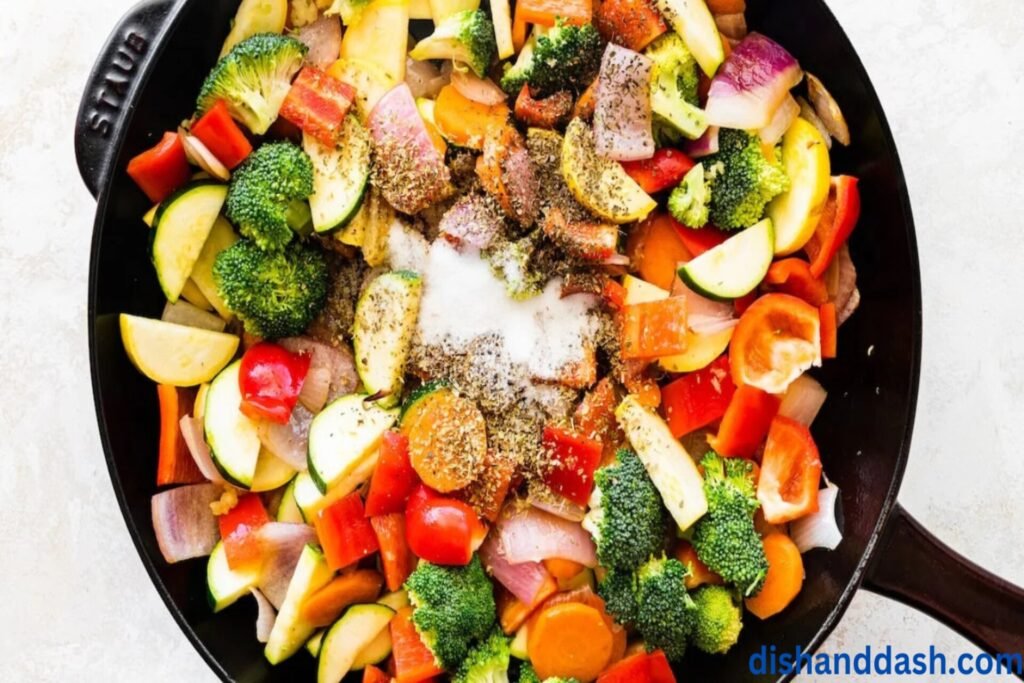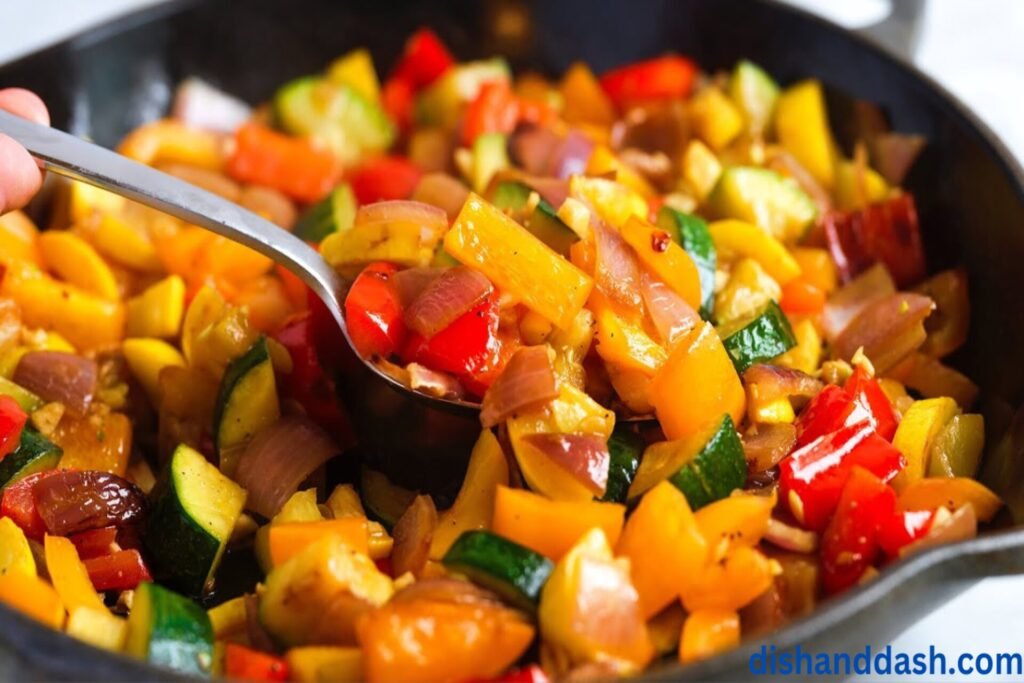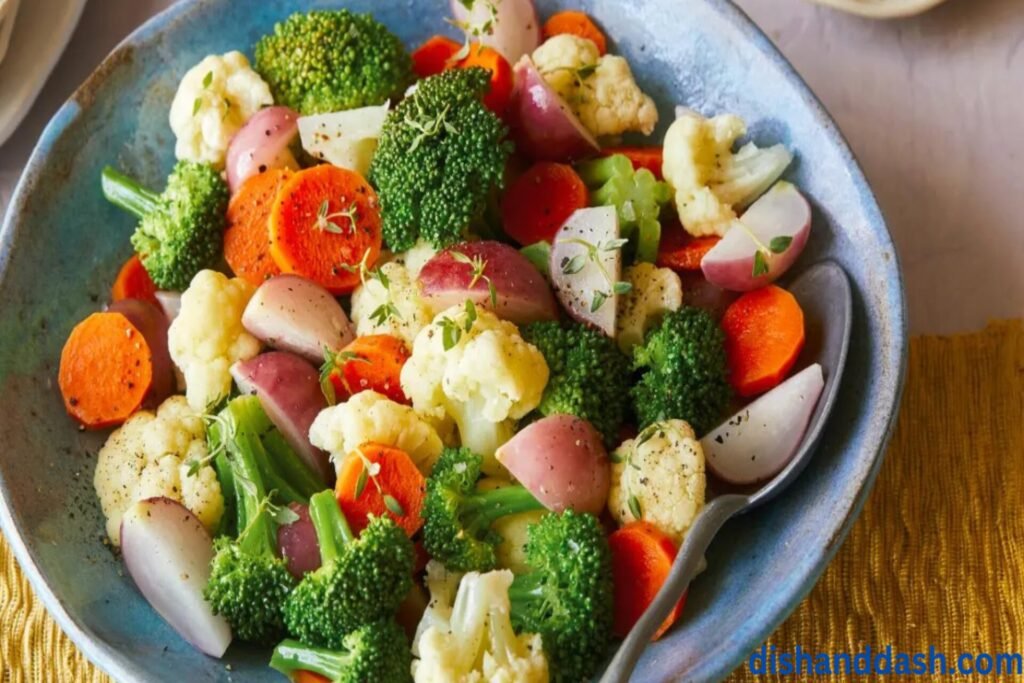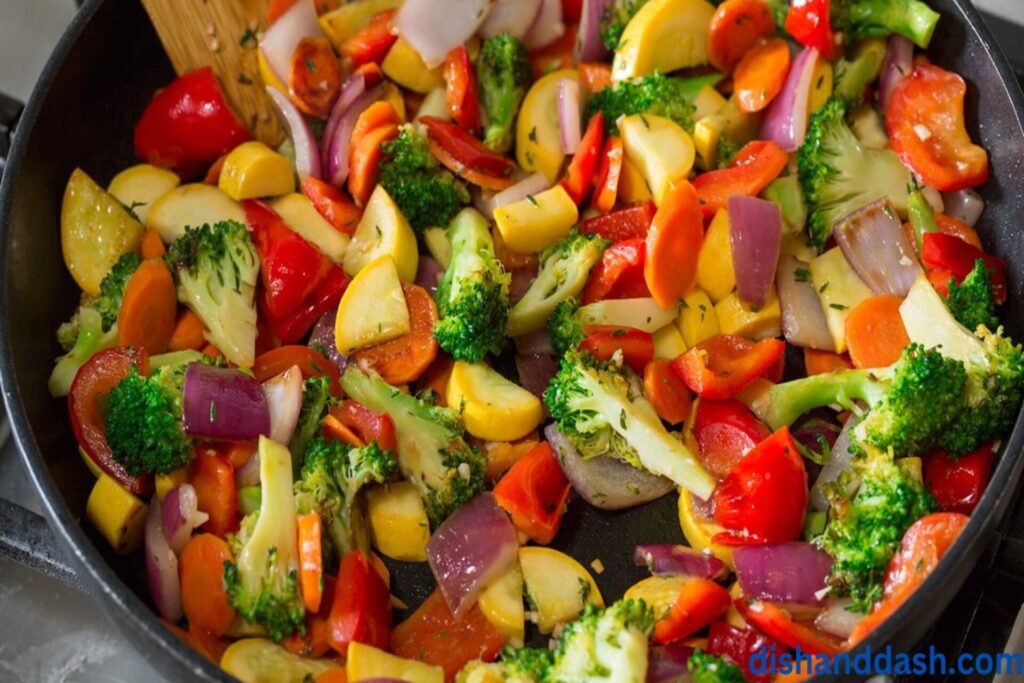Sautéed vegetables are one of the easiest, tastiest, and healthiest foods that you can easily prepare. For anyone from a complete novice to those experienced in home cooking, learning this method allows the freedom for so many dishes. From enhancing the color of the food on your plate to boosting the nutrient value of the meal, sautéed vegetables can be a supplement or a main course.
As promised in my previous post on sautéing technique, this post will guide you through selecting the right vegetables to use, the right stages required for the vegetables to be sautéed properly, and additional professional tips you might consider. Let’s get cooking!

Table of Contents
Why Sauté Vegetables?
Sautéing is a method of cooking in which food is browned quickly in a small quantity of basting fat, in a preheated pan over medium to high heat. It is suitable for enhancing the flavors of the vegetables, producing desirable tenderness, and preserving valuable nutrients that may be killed by boiling or taking too long to cook. Also, the method is very liberal—please feel free to substitute any vegetable for the other, your choice of seasonings or oil.
Benefits of Sautéed Vegetables
- Retains flavor and nutrition: Using medium-high heat to cook your vegetables will ensure that those delicate nutrients as well as their crunch are still preserved.
- Quick and easy: A good one for those who plan to whip up something quick for the family on a working weeknight.
- Customizable: Ideally, this is your preferred vegetable, although what is available in season would be fine; try out various herbs and spices.
- Great for meal prep: Prepare a large portion then freezer and warm up servings once needed in a week.
Ingredients for Sautéed Vegetables
Here is a list of the basic ingredients to help you get started: If you feel so inclined you may swap out anything as per your taste and what you have on hand.
| Ingredient | Description |
|---|---|
| Vegetables | Bell peppers, zucchini, onions, carrots, broccoli |
| Oil/Fat | Olive oil, butter, avocado oil |
| Seasonings | Salt, pepper, garlic, chili flakes, herbs |
| Aromatics | Garlic, shallots, or ginger |
| Optional Add-Ins | Soy sauce, lemon juice, balsamic vinegar |
Step-by-Step Guide to Sautéing Vegetables
1. Choose Your Vegetables (and Cut Evenly)
The first things that need to be done is to select good fresh-quality vegetables with bright colors. Although all vegetables can be sautéed, some vegetables are best when cooked with others, so it’s easier to select a few to cook simultaneously. A classic mix is a combination of bell peppers, zucchini, onions, and carrots but you can also use mushrooms, green beans, or snap peas.
Pro tip: Try to chop almost all the vegetables into uniform pieces. Garlic and onions have to be chopped more finely, and then there are vegetables like carrots and broccoli the best way is to slice them thinly or even cut them into small pieces.

2. Heat the Pan
Sautéing needs a utensil that is heat resistant to prevent warping and easy sticking on the bottom surface of the pan. Ideally, a cast iron skillet or any heavy-bottomed pan or stainless steel frying pan should be used. You then put in a tablespoon of oil (or butter) and turn the stove on high heat such that it will be slightly smoking.
Why medium-high heat? This temperature dexterity enables the vegetables to cook fast without over-softening and retaining lots of flavors and nutrients.
3. Add Aromatics (Like Garlic and Onions)
If you are using aromatics such as garlic, onions, or ginger, then put them into the pot at this point and stir cook for 1-2 minutes until they begin to send out their aroma. Flavors begin with aromatics and so, starting with them will guarantee the flavoring of the oil under consideration.
Pro tip: Don’t let the garlic burn! Garlic needs to be burnt as it will give a bitter taste to the food you are preparing.
4. Add the Vegetables
After your aromatics are seasoned, aromatic, and ripe for the next addition, add in the remaining vegetables. Putting the harder vegetables first and taking more time to cook such as carrots or broccoli then followed the softer ones such as squash or bell peppers.
To avoid burning, you have to stir the vegetables often and you fry the vegetables until they are tender which may take between 5- 10 minutes depending on the one used or the size of the vegetables used.
5. Season and Customize
You can add salts and spices as well as your preferred type of spices or herbs at this point. This is where you get to be creative. Want an Italian vibe? Add basil and oregano. Going for Asian flavors? A few drops of soy sauce, a few drops of sesame oil, or a small dash of ginger has a tremendous impact. Another option is to end it with 1 teaspoon of balsamic vinegar or lemon juice to lighten it up.

Key Tips for Perfect Sautéed Vegetables
- Don’t overcrowd the pan: If too many vegetables are placed in the pan it results in steaming instead of sautéing. Make sure you’re using a large, wide skillet and if you do have a lot of vegetables, cook them in portions.
- Use the right amount of oil: If you add too much oil, your vegetables will be greasy, but if you put too little oil, your vegetables will burn. It just takes one tablespoon for a whole skillet of vegetables.
- Stir often, but not too much: Stirring periodically only helps the food heat evenly and brown uniformly. If you stir too much, the veggies don’t get that pretty brown on them that you want them to have.
- Add greens at the end: If you’re using spinach or kale as your leaves, then add them to the pan at the last five minutes. They are also ideal because they are quick to prepare and only take about 1-2 minutes to wilt.
Variations and Add-Ins
The best thing about sautéing vegetables is that it’s versatile to the core, and you can experiment with almost anything. Here are some variations and add-ins to try:
1. Sautéed Vegetables with Garlic and Herbs
Their rub is quite simple using crushed garlic, salt, pepper, and select fresh herbs such as thyme, parsley, or cilantro.
2. Asian-Inspired Sautéed Vegetables
Mixed into this are soy sauce, sesame oil, and a sprinkle of sesame seeds. It seems that even the simple addition of ginger and a little honey will make the dish sweeter and richer.
3. Sautéed Vegetables with Balsamic Glaze
When sautéing the vegetables, afterwards put a few drops of balsamic vinegar into the pan allowing the vinegar to caramelize. This adds a tangy-sweet flavor that would do well with roasted meats of grains and seed products.
4. Cheesy Sautéed Vegetables
It’s nice and finishing some grated Parmesan or Feta cheese over the vegetables at the last minute it also gives it a rich-looking finish. The cheese becomes a little gooey – the perfect thing to add some meaty flavor.

FAQs
1. Can I use frozen vegetables for sautéing?
Yes, you can, but keep in mind that frozen vegetables contain more water, so they might steam rather than sauté. To avoid soggy veggies, pat them dry after thawing and cook them in small batches over high heat.
2. What is the best oil for sautéing vegetables?
Olive oil is a great choice for sautéing because it has a moderate smoke point and adds a lovely flavor. For higher heat, you can use avocado oil or grapeseed oil, which have higher smoke points.
3. How do I store sautéed vegetables?
Store leftover sautéed vegetables in an airtight container in the fridge for up to 4 days. You can reheat them in a skillet over medium heat or in the microwave.
4. Can I meal prep sautéed vegetables?
Absolutely! Sautéed vegetables are great for meal prep. Cook a large batch, store them in individual portions, and use them throughout the week in salads, grain bowls, or wraps.










